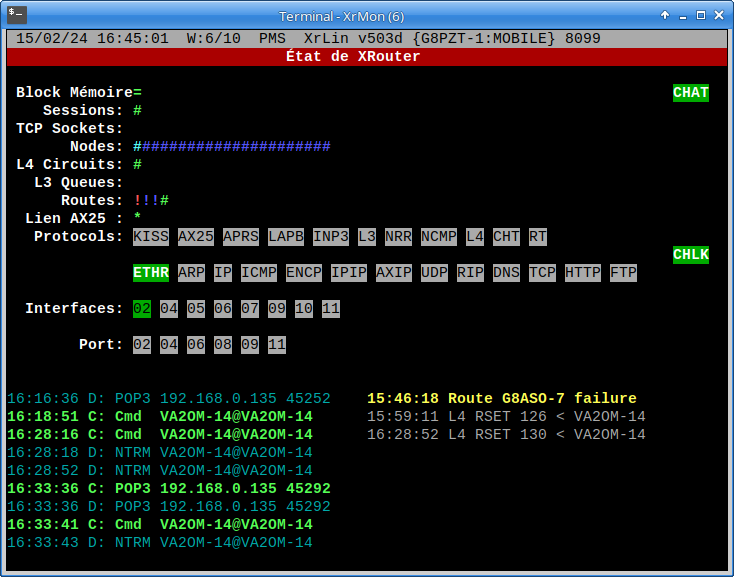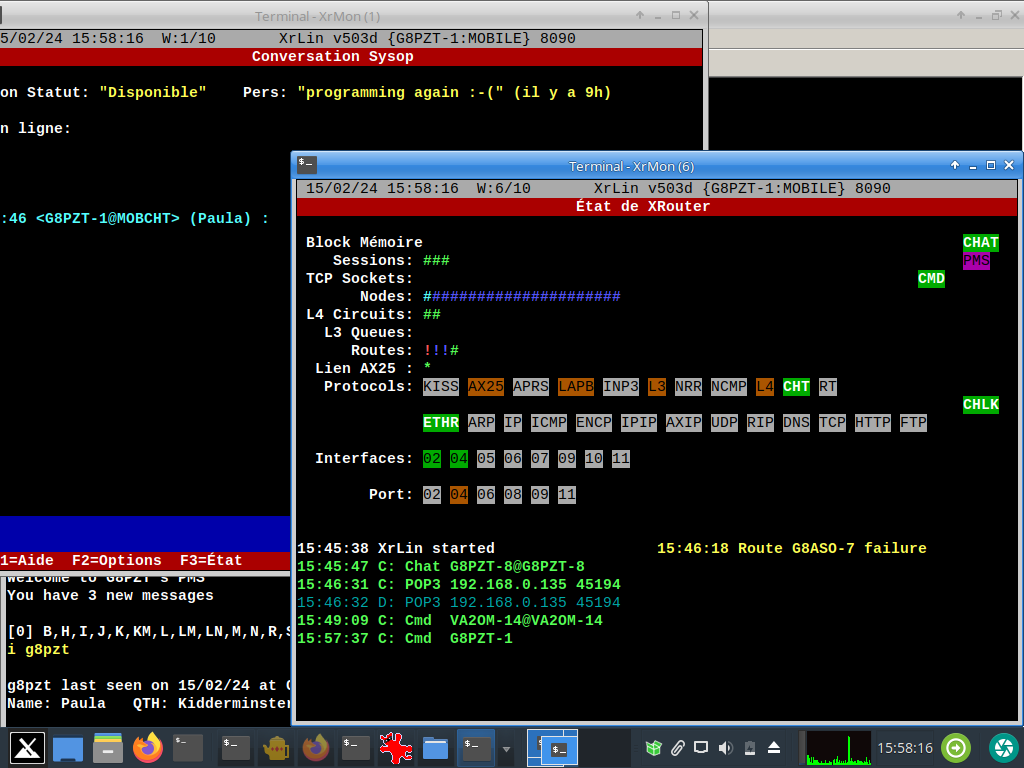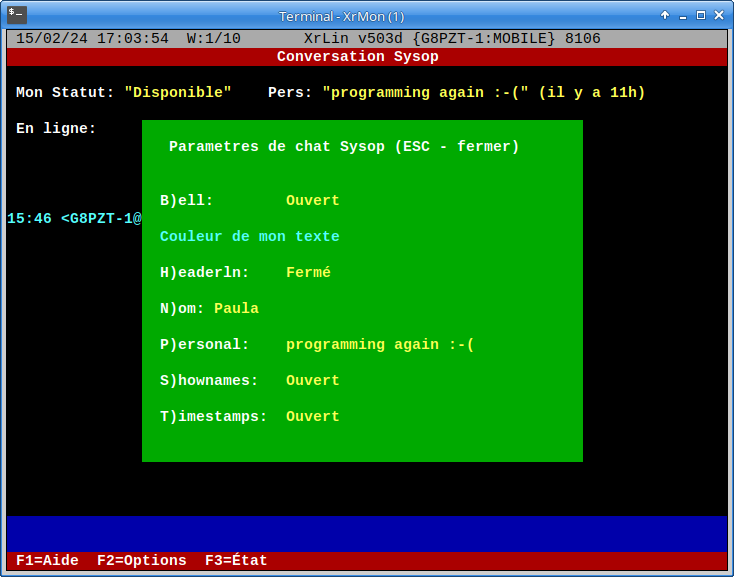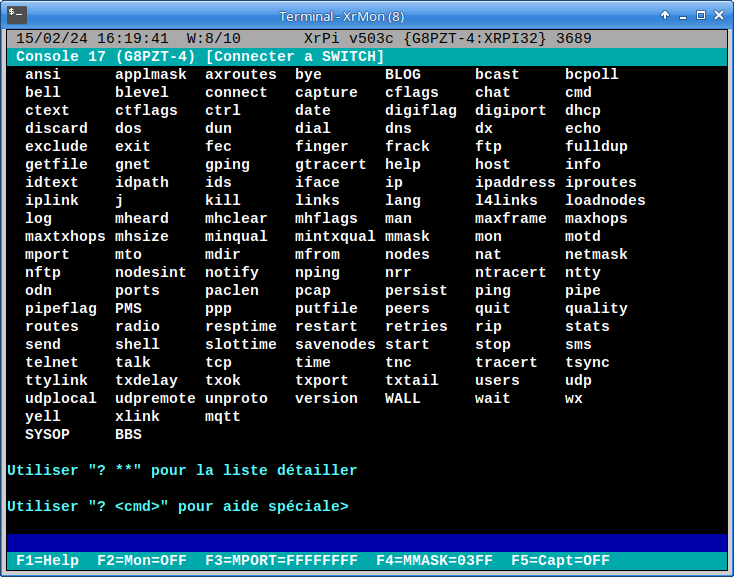XRouter Tour - Sysop Interface 2 - XrMon
The second type of sysop interface is XrMon. This is the generic name for a small standalone program which can either be located on the same machine as XRouter, or on a different machine. It can be used with both daemonised and non-daemonised instances of XRouter.
XrMon comes in 3 flavours - XrPiMon (for Raspberry Pi), XrLinMon (for x86 Linux), and XrWinMon (for Microsoft Windows). The Pi version is available for both 32 and 64-bit. This is what XrLinMon looks like:
Looks familiar doesn't it? However, you may notice that the Terminal caption says “XrMon(6)” instead of “XrLin” and there's no left/right captions on the red title bar. That's because XrMon monitors a SINGLE Xrouter window. You can't scroll left or right. If you want to monitor another window, just open another instance of XrMon.
The following picture shows 3 instances of XrMon watching different windows concurrently. Unfortunately it's a rubbish demo, as I only have a tiny low-res desktop, but if you have a large monitor you can position several non-overlapping XrMons on the same screen..
XrMon windows are not just passive “viewers”, they are fully interactive. The following example shows the result of pressing the F2 key on the XrMon attached to the sysop chat window…
If you “attach” an XrMon instance to a “console” window, it becomes a new, completely independent console, meaning you can have up to 10 concurrent consoles.
As mentioned previously, XrMon is available for Windows, X86 Linux and ARM platforms. The above example shows XrLinMon on a laptop remotely operating XrPi on a Raspberry Pi somewhere else in the world.
Next, we take a look at the HTML Interface



